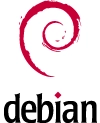Hopefully everyone is aware that as of October 14, 2025, there will be no more free support for Windows 10 and therefore no more free security updates. This means that security vulnerabilities still present in Windows 10 will no longer be fixed, making computers even more vulnerable to security risks. I would even go so far as to say that criminals are currently hoarding the security vulnerabilities they have found so that they can exploit them for longer after free support ends. According to StatCounter, Windows 10 still accounted for ~45% of all Windows versions registered there in August 2025, which I find remarkable and, at the same time, very concerning.
Before we really get started, here is an overview of all the articles in this series published so far:
- Linux? What the penguin!?
- Basic installation of the Linux distribution
- Installation of native Linux software
- Installing Windows software on Linux
Introduction
Although I originally included some personal speculation here about what might be causing the slow transition to Windows 11, I decided to delete it. After all, this article is not about Windows, but rather about Linux. Fortunately, Linux has gained significantly more visibility as a potential desktop operating system in recent years and months. A few reasons why you should consider Linux as an operating system are listed at End of 10. In my circle of people, too, several folks have started experimenting with Linux.
My Goal
Since Windows 11 is out of the question for me personally and my time with Windows 10 was only ever intended to be temporary, I am currently in the process of switching everything back to Linux. I would like to document how I am migrating my notebook (MSI Vector GP78 HX 13VG-055) in this series of articles. To ensure that everyone can understand my decisions, I will try to provide sufficient background information.
My notebook is primarily my work tool, so all the software I use must run on Linux. In addition, I also need to be able to play video games, whether for research, testing, or just for fun. So, in addition to standard applications such as browsers, Office, etc., at least the following applications should work: Steam, Heroic Games Launcher, Blender, Marmoset Toolbag 5, Affinity Suite, Godot, Unreal Engine 5, Substance 3D Designer, Substance 3D Painter, various programming tools (Python, Rust, C#, C++, and Kotlin). It’s a colorful mix of standard applications, commercial software with an extra Linux version, and Windows software that doesn’t run easily on Linux.
Another challenge with my notebook with a dedicated graphics card is that it has two GPUs. An economical GPU integrated into the CPU for normal desktop operation and the dedicated NVIDIA GPU for more performance. Of course, the NVIDIA GPU should only run when either the performance is really needed or the energy consumption is not so significant, i.e., when the power supply is connected.
Why me?
I have tried all the common desktop operating systems in the past and have found that I like the “style” of Linux best. Although I have probably used various versions of Windows and MacOS more extensively than typical users, Linux has been my personal sweet spot for many years. It is quite secure, fast, ideally contains only the applications you want, does not send any telemetry data, and can be completely customized to my own needs.
I started using Linux in 2002 when I installed it on my little sister’s PC. Since she didn’t know at the time that it was better not to click on every link on the internet, she kept having problems with malware. The switch solved her malware problems. She got used to the changes relatively quickly.
Shortly after that, I started experimenting with Linux on my own systems. I can still remember my first attempts with Gentoo. That must have been in 2007. A colleague at work had told me about Gentoo, and I wanted to see how much faster I could play World of Warcraft with it. Even though it took me a whole weekend to configure and compile the kernel properly, the result was impressive. I really did get 10-20 FPS more under Linux than under Windows. So over the years, I spent more or less time with Linux. Both professionally as a server administrator and software developer, and privately in various ways.
A few Linux basics
Before we start looking at installing my notebook in the next article, I would first like to provide some basic information. I will then go into specific details in the following articles.
What exactly is Linux?
Strictly speaking, Linux is not an operating system at all, but only the kernel, which, to put it veeeeery simply, is the heart of the operating system that mediates between hardware and software. Most of the other stuff that is generally associated with Linux comes from GNU. Therefore, the operating system is actually called GNU/Linux, even though it is usually simply referred to as Linux, which I will also use in my articles.
In order not to delay the publication of this article any further, I will spare you a detour into the thoroughly interesting background story of GNU and Linux. In general, Linux has become essential in the world of servers and embedded devices. Even on Azure, Microsoft’s cloud platform, Linux holds an impressive share of over 60%, as Microsoft itself announced in October 2024. Even when looking at the more everyday world, it is hard to avoid Linux. This is because Android (in all its forms), many operating systems for e-book readers (e.g., Kindle, Kobo, Tolino), and many router operating systems (e.g., AVM Fritz!OS, OpenWrt) are based on Linux or at least on the Linux kernel.
Distributions?
When you start looking into Linux, the first term you come across is “distribution.” A Linux distribution refers to the actual, complete operating system. It consists of the Linux kernel and a collection of software and tools tailored to it. The package also includes a package manager, which can be used to manage all software, i.e., installation, uninstallation, and updates.
There are now countless distributions. Just looking at this timeline quickly makes it clear that this is a jungle. On closer inspection, you can see the family tree of the various distributions. This is why we often talk about distribution families or derivatives in this context. Here you can find a brief overview of what I consider to be the most important distribution families at present.
Debian

Debian (https://www.debian.org/) is a distribution developed by an active community with a long history. The project was launched in 1993, making it not only one of the oldest distributions still in active development, but also one of the most influential. One of the best-known package formats, .deb, originated with Debian. Debian forms the basis for many other distributions, with Ubuntu (https://ubuntu.com/) probably being the best known of these. GRML (https://grml.org/), my favorite emergency distribution, is also based on Debian.
Debian was also my first distribution, and I still enjoy using it in server environments today because the versions have long support periods and are very stable. On the other hand, the official package sources of the stable branch sometimes contain older program versions. However, since security-related patches are backported, this should rarely be relevant in server environments. If it is, this can be easily fixed with customized package sources.
Red Hat and Fedora
Red Hat Linux (RHL) was a paid distribution from Red Hat. It was very popular in the 1990s. The .rpm package format developed as part of RHL and the RPM package management system have become widely used. As a result, commercial software that offers its own Linux versions is usually available as .deb or .rpm. Fedora is the direct successor to Red Hat Linux and is available free of charge. Today’s paid Red Hat Enterprise Linux (RHEL) is derived from the current Fedora versions.

Fedora relies exclusively on content with fully free licenses in its own package sources. Therefore, you will not find the proprietary version of the NVIDIA driver there, for example. Of course, additional package sources (e.g. RPM Fusion) can also be added to Fedora to install software that does not use fully free licenses via the package manager.
Gentoo

Gentoo is the distribution that allows you to customize everything, and I mean everything, and adapt it directly to your own hardware. The reason for this is that Gentoo relies on source code-based packages, so the software packages are compiled during the installation process using the package manager. With the right configuration, you can ensure that the software is adapted as perfectly as possible to your hardware, thereby achieving the best performance. This performance advantage is not offered outside of Gentoo and its derivatives, as these usually rely on precompiled packages. For high hardware compatibility, they rely on less optimized compiler parameters. Of course, this advantage does come with some disadvantages. Since all software packages must be compiled first, the installation process for large packages takes a correspondingly long time. Therefore, Gentoo is a really great distribution for special cases, but in daily use, I personally found the time required for compilation to be annoying at some point.
Arch Linux

The special feature of Arch Linux is that it is a so-called rolling release distribution. This means that there are no fixed versions, but you always get the latest available versions of software very quickly. It is possible that something may not work quite right after an update, but if this happens, it is often fixed within a few hours, so a new update should resolve the problem. Otherwise, the community is really very helpful, as with the other distributions, so you can often get help very quickly either in the forum or in the ArchWiki.
I have been using Arch and its derivatives as standard for my normal PCs for many years. But if you decide to use Arch Linux, you shouldn’t be afraid of the command line. Especially if you use Arch Linux yourself, there is no way around it, as there is no graphical installer. Probably the best-known Arch Linux derivative is SteamOS, which runs on the Steam Deck by default.
Gaming distributions
In recent years, special distributions focusing on gaming have appeared. They attempt to achieve a balance between user-friendliness and performance. They usually focus on more recent hardware, so you should check whether your CPU/GPU is supported before installing.
I myself have not yet had any experience with these distributions, but I have decided on one of the following distributions for my notebook.
CachyOS

CachyOS was founded in 2024 and is therefore still a very young distribution. It is based on Arch Linux and is developed by a team led by Peter Jung. The performance boost is achieved by only supporting CPUs that are capable of at least x86_64-v3, which should apply to most CPUs from 2013 onwards. The CachyOS package repositories also include further optimized packages for CPUs with x86_64-v4 and Zen4/5.
Nobara Linux

Nobara Linux was first released in 2019 and is based on Fedora. Thomas Crider, who works full-time as a software maintenance engineer at Red Hat, is primarily responsible for the customizations compared to Fedora. He is also known by his pseudonym GloriousEggroll and creates customized versions of Proton (I will discuss Proton in more detail in a later article).
The list of supported GPUs (AMD, NVIDIA) can be found in the corresponding Wiki.
Pop! OS

Pop! OS is based on Ubuntu and was launched in 2017 by System76. The motivation for creating their own distribution is presumably to provide the most perfect system possible for their own computers. But even if you don’t own a System76 computer, you can of course use the distribution free of charge.
Desktop environments?
The desktop environment is the graphical user interface that most PC users work with. In the Windows world, users are used to only having one possible user interface for each Windows version. Of course, this can be customized, for example, using themes, but ultimately it always remains the same desktop.
In the Linux world, however, things are different. There are a variety of possible desktop environments, and each one naturally tries to offer the best UI with the best UX. For me, the choice of desktop environment is purely a matter of taste. And don’t worry, once you’ve decided on a desktop environment, you can easily change it.
I will now only discuss the desktop environments that I consider to be the most common. Ideally, you should try them out for yourself and see which one you like best. Live distributions, which come with different desktop environments included, are particularly suitable for this.
KDE

KDE (formerly known as Kool Desktop Environment or K Desktop Environment) is a veteran among desktop environments. It has been around since the late 1990s and is still actively developed. It is based on the Qt Framework. The desktop environment is now called Plasma and offers a familiar look and feel with a taskbar at the bottom of the screen, similar to Windows. Plasma can be customized to suit your needs with configurations, themes, and additional programs. And with the KDE applications, optional programs for many purposes are included.
GNOME

GNOME is, alongside KDE, the second major veteran in the field of Linux desktop environments. GNOME was initiated as a response to KDE, as there were initially disputes over licensing for Qt with KDE. GNOME relies on GTK. The look and feel of GNOME and Gnome Shell is “distractionfree”, which makes it unfamiliar to many at first. However, it can also be customized to a great extent. GNOME also provides a wide range of applications for all essential tasks.
Cinnamon

Cinnamon was originally developed for Linux Mint and started out as a fork of Gnome Shell. Over the course of its various versions, Cinnamon has become increasingly independent and now also provides standalone applications. In the classical themes, the UI is also based on the Windows layout with a taskbar.
Xfce

Xfce is the dinosaur in this short list, as this desktop environment has been around since 1996. According to its own statements, Xfce aims to be fast and resource-efficient, but also visually appealing and user-friendly. In the past, I have noticed on several occasions that Xfce has been recommended for people switching from Windows. So if you want to be as resource-efficient as possible, you should give Xfce a try.
What next?
That was my first overview of Linux and thus also the introduction to this series of articles. In the next article, you can find out which distribution I chose and why. I will also explain how I approached the basic installation.

